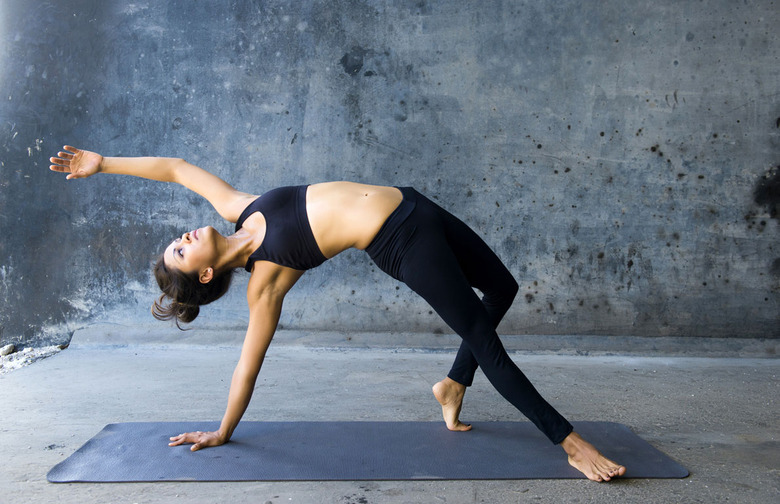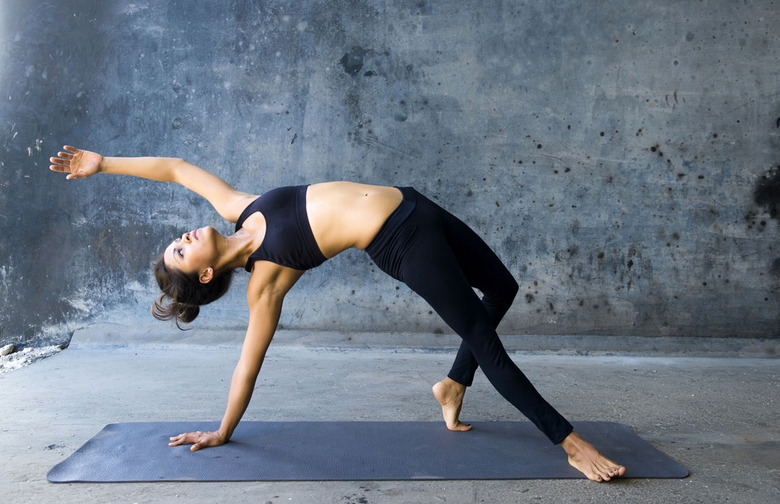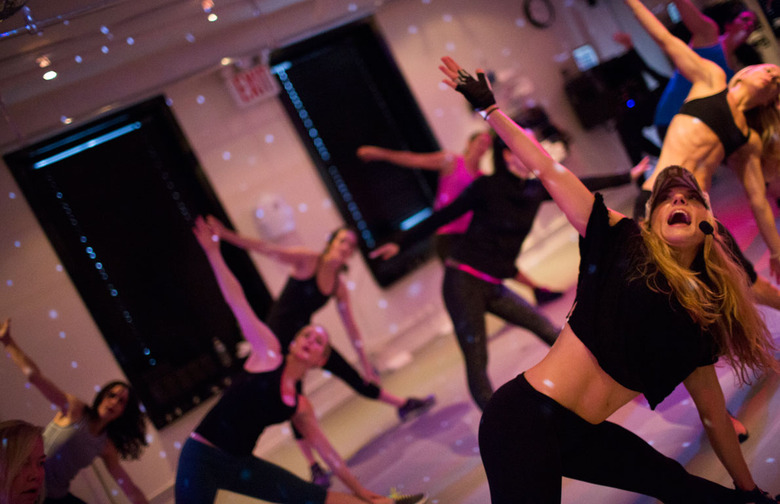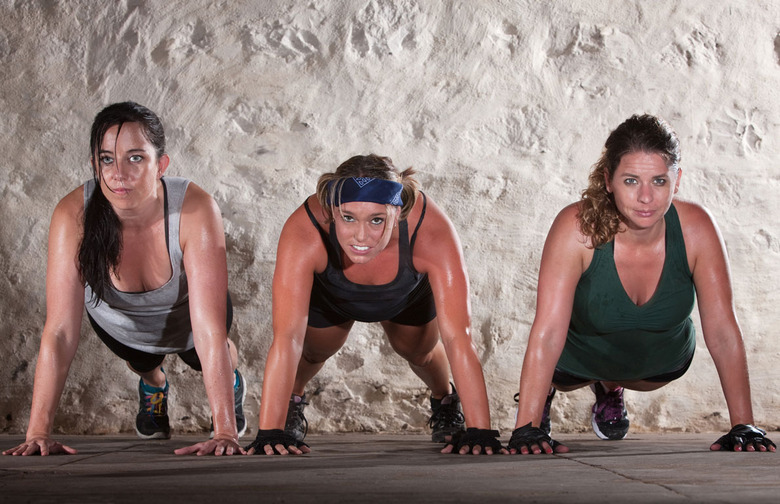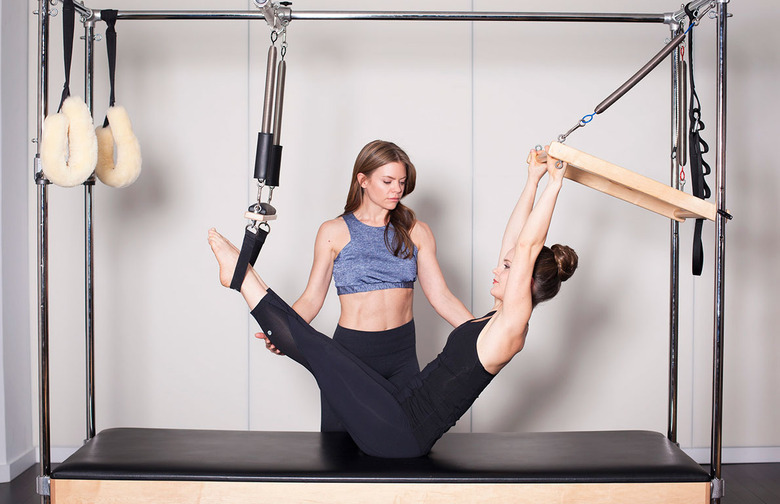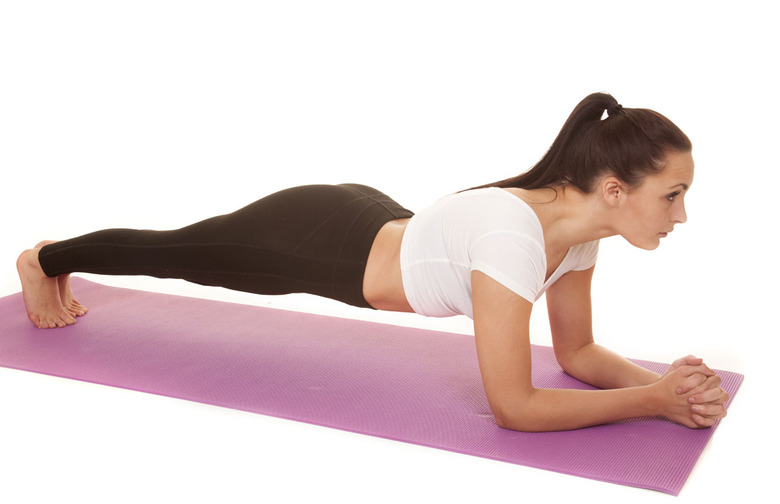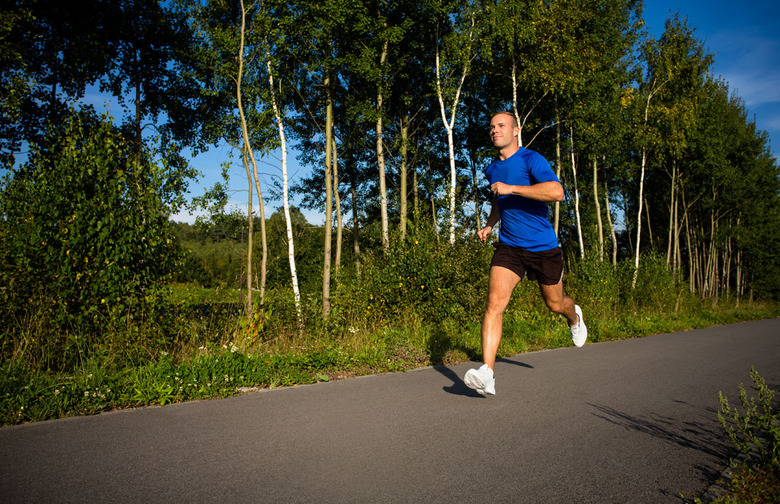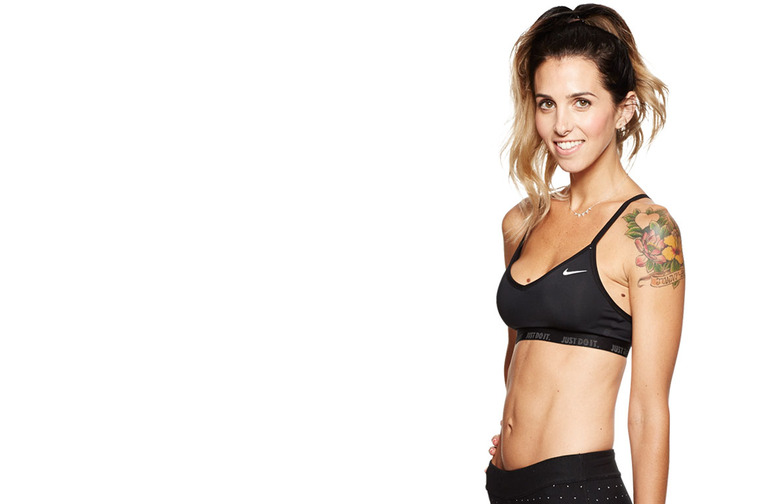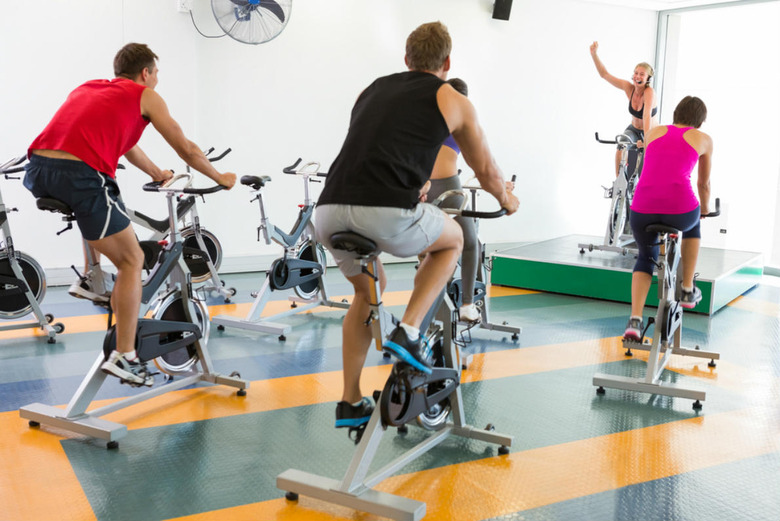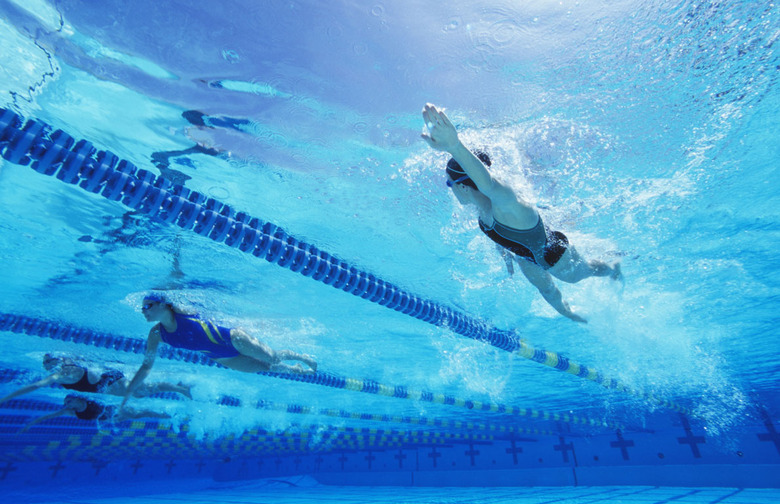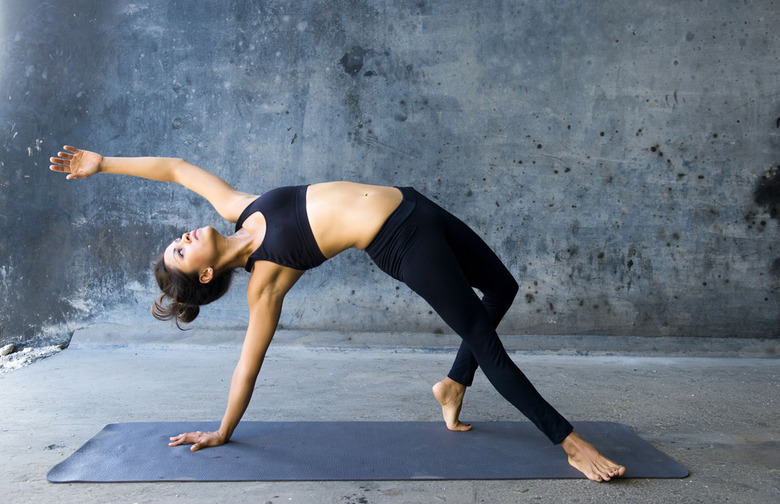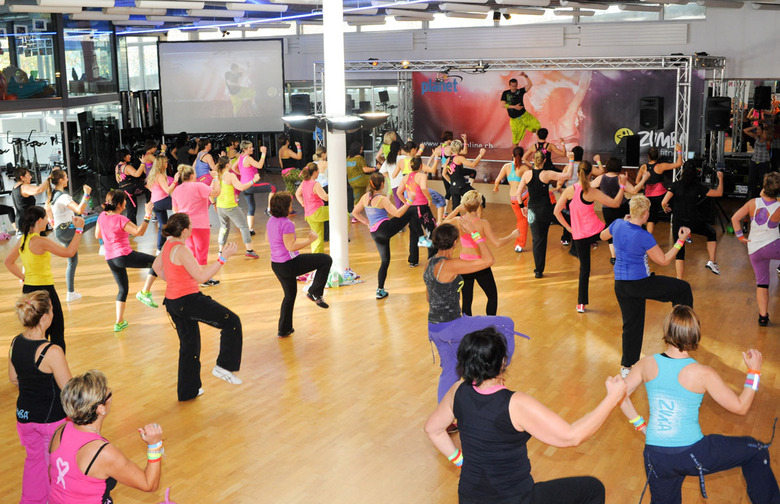What To Eat For The Way You Work Out
How Should You Fuel?
Munching on an apple and peanut butter? Energy bar? Coconut water? Nothing? Whatever your workout preference, be it a Spinning class, yoga, or Zumba, it's essential that your body be primed for each specific pursuit. But what, exactly, should you eat before, after, and during a workout?
Akt InMotion
"An hour and a half before you work out, eat a light meal or snack with a combination of carbs and proteins — a small bowl of oatmeal with raisins and walnuts, for example. Then, drink coffee 15 to 30 minutes before your workout to rev up your heart rate. In the 45 minutes after your work out, try a healthy protein shake with berries, hemp or whey protein, almond milk, and ice, or a healthy salad with chicken, veggies, extra-virgin olive oil, and lemon juice."
- Anna Kaiser, celebrity trainer and founder of AKT InMotion
Bootcamp
"Bootcamp is a very intense cardio and weight workout. I have to be careful what I eat before, or I end up feeling nauseous. Pre-workout, I grab half a banana and a cup of coffee. The combination of the natural sugar and caffeine give me the kick I need for an intense workout. Then I come home and have a green smoothie: coconut water, ice, the other half of banana, two scoops of my favorite protein powder, one tablespoon flax or chia seeds, cinnamon, turmeric, and two handfuls of greens (I rotate between collards, chard, kale, and spinach). This smoothie offers a balance of protein, healthy carbs, fiber, and essential fatty acids."
- Tracee Gluhaich, personal trainer
Hiking
"Day hikes are usually long enough that calories are needed during the activity, not just before and after. I like to eat a small snack of 300 to 400 calories every two to two-and-a-half hours, depending on the terrain and pace — on fast hikes with big vertical gain, I eat more food and more often; on slower hikes on flatter terrain, my body demands fewer calories. Unlike other endurance sports, like running and cycling, gastrointestinal distress while hiking is uncommon. If you're breathing really hard or your legs are cramping up, you're probably hiking too fast. By virtue of it being a less intense exercise, less-digestible foods are possible. I know that standard hiking food includes energy bars and G.O.R.P. (trail mix), but I find it far more satisfying to bring a turkey sandwich, chocolate chip cookies, and an avocado with corn nuts."
- Andrew Skurka, professional backpacker
Pilates
"Pilates is a centering and meditative technique that creates balance in the body. It restores calm to the nervous system in a way that improves metabolism, immunity, and digestion. I always aim to eat something equally balancing before and after to help with this positive change. Before Pilates, I like to eat a red apple or a salad of shaved raw organic Brussels sprouts and red apple. Apples have pectin, which help with stomach acidity and blood insulin levels, and Brussels sprouts are extremely rich in vitamins and minerals. After, I like to nourish and hydrate with a mini LoveGrace Beauty Elixir or a LuliTonix blend."
- Erika Bloom, founder and owner of Erika Bloom Pilates
REV4 Workout
"REV4 was designed to change your body fast with zero equipment. It's a functional fitness program that focuses on progression and short segments of specific exercises at high intensity levels. Because my workouts are body weight-based, they involve that you use your own body as a form of resistance, which requires fuel and energy. It's so important to listen to your body before your workout. I am a huge fan of real, natural, whole foods whenever possible. But that's not always enough before or after a workout, which is why I'm a firm believer in a pre- and post-workout meal. For me, this means a scoop of a natural whey protein powder, mixed with water or coconut water and a piece of fruit. I prefer whey because it's fast-absorbing and easy to digest. I suggest a piece of fruit containing fructose (apples, oranges, or peaches, for example) as fructose helps with muscle development and gives you energy. I never eat fats directly before or after a workout because I don't want to slow down the absorption of the sugar and protein pre-workout."
- Natalie Jill, creator of the Rev4 Bodyweight Workout DVD
Running
"Rigorous running with food in your stomach can be unsettling. Ever since my training became serious, I never ate before my runs or speed workouts. If I ever did eat, it seemed to upset my stomach. At least three hours before my races, I eat easy-to-digest foods like a sweet potato and poached eggs, or yogurt and a banana. Shortly after every workout I get extremely hungry and am always prepared with a solid snack packed in snap-tight glass containers. A few examples: brown rice, raw salmon, yellow sweet potatoes, basil, olive oil, and sea salt; boiled beets, roasted squash, lentils, raw yellowtail, avocado oil, walnuts, and black salt and parsley; and boiled corn kernels, black beans, parsley, cilantro, boiled and shredded organic chicken or raw red tuna, sesame seed oil, shredded yellow peppers, cauliflower and shredded lettuce."
- Michael Stember, brand ambassador of Mile High Run Club and former national U.S.A. champion, Stanford track and field captain, and member of the U.S.A. Olympic Team.
SoulCycle
"SoulCycle is a 45-minute indoor cycling workout. Big sweat and high intensity make up our unique workout experience, and it's super-important to fuel and refuel your body right. There is no real science to figuring out what works best for your body; it takes a bit of trial and error to see what you need to gear up for and replenish from a SoulCycle class. Every body and each day is different, so it's most important to be in tune with what your body needs at any given moment.
Morning classes require different nutrition and energy than evening classes. That said, I believe a banana is a perfect pre-SoulCycle snack. They're a powerhouse of energy (usable sugars), fiber (which keeps you full), and potassium (which you need for good muscle function). They are easily digestible and a great on-the-go food. Post-SoulCycle, you'll need some protein and carbs. I usually go for a protein smoothie with nut butter, fruit, vegan protein powder, some chia seeds, and a pinch of cinnamon. When I have a bit more time, I'll eateggs (organic and cage-free, of course) with a side of avocado, a drizzle of olive oil, and maybe a piece of sprouted grain toast or a bit of fresh fruit. No matter what you choose, it should be comprised of whole, unprocessed foods! Make sure it makes you feel good and energized, and drink lots of water before, throughout, and after your class."
- Eve Kessner, SoulCycle instructor
Spinning
"As an indoor cycling instructor for the past 6 years, it's taken me some time to figure out what adequately fuels me pre-workout and helps me recover post.
Through trial and error I've discovered snacking on something light before I teach — a piece of fruit, vegetables and hummus or a handful of almonds — keeps me full, focused and energized for the class ahead.
Staying hydrated is also an essential component of having an effective spin class — because, let's face it, you're going to be sweating ... a lot. I will typically drink diluted coconut water or Spark before and during class for extra hydration.
Post-indoor cycling class it's all about replenishing your body with nutrient-dense foods. I'll make myself a colorful salad overflowing with starchy vegetables, crunchy radishes and some sort of lean protein.
However you choose to recover, remember to drink plenty of water. You're losing a lot throughout the workout so it's important to replenish your cells!"
- Caroline Earle, trainer and author of The Trendy Trainer
Swimming
"For a good swim workout, you want to avoid big meals before your swim and rehydrate and get carbs and protein in your system afterwards. Pre-workout meals should consist of simple energy-producing foods like apples or bananas, the workout classic. For something more substantial, add some natural peanut butter to your apple, or even make a peanut butter and banana sandwich on some whole grain bread. You don't realize how much you sweat when you swim, but most pools are kept around 86 degrees. Imagine running around a track when it's almost 90 degrees outside. One of the best post-workout recovery drinks you can have is, surprisingly, chocolate milk. It has less sugar and more natural ingredients than Gatorade. It also has high water content and an added dose of protein to help with muscle recovery, in addition to a healthy dose of vitamins. Combine that with a meal consisting of lean protein and natural carbs, like chicken breast over rice, and be sure to drink plenty of water. If chocolate milk isn't your style, pour out half your Gatorade and replace the contents with water to cut into the extraordinarily high sugar content."
- Ben Slovek, Penguin City aquatic director and former competitive swimmer
Yoga
"Yoga is about purifying your body and moving in a way that not only tones and stretches you, but makes you feel happy and healthy. The best foods for yoga are whole grains, vegetables, unprocessed proteins, and fruits. Before a yoga class, hydration is key, so drink a lot of water. If you feel dehydrated, coconut water is a great go-to beverage. I often eat a piece of fruit or a whole grain bar, like the 2 Degrees bars or the Health Warrior chia bars. They are small and low in calories, but pack a punch. You don't want to exercise on a full stomach. After yoga, a complete meal is in order. You can't go wrong with a plate of quinoa (or another whole grain), steamed leafy greens, squash or sweet potato, and a protein, such as beans, tofu, fish, or tempeh. I love salad dressings, too: try Organicville Foods or a local, whole-foods ingredient dressing. When in doubt, go Mediterranean with a bit of olive oil and balsamic vinegar. Ease and quality ingredients are key!"
- Hilaria Baldwin, yoga instructor and fitness and wellness expert
Zumba
"Since Zumba is a high-intensity cardio class, make sure to hydrate with plenty of water before, during, and after your workout. I recommend eating a small snack of complex carbs and protein that your body can burn off for energy easily. An apple, berries, or a banana paired with nut butter or a handful of nuts are a perfect protein combination. Eat this snack about two hours before class so you avoid getting cramps while moving. A green juice is also a great energy booster and will provide an immediate surge of vitamins, nutrients, and energy to your bloodstream. After class, you have a 45-minute window to replace your glycogen stores and refuel your muscles and body (you will also burn off these calories easier than if you eat much later after your workout). I recommend a hearty combination of complex carbs and protein, like a salad with dark leafy greens, unlimited vegetables, and grass-fed chicken or beef, or a quinoa bowl with root vegetables such as sweet potatoes."
- Jamie Forward, certified holistic health coach and Zumba instructor
